A Day in Montmartre
Morning
As with all the city’s busy attractions, the sooner you get to
Sacré-Coeur
the more you will have it to yourself – it opens at 8am.
Later in the morning, enjoy the bustle of Montmartre with tourists
having their portraits painted by the area’s street artists in the place
du Tertre. There are plenty of places to choose for a coffee, but the
one most of the artists frequent is the Clairon des Chasseurs (
3 pl du Tertre
01 42 62 40 08).
For art of a more surreal kind, pay a visit to the
Espace Montmartre Salvador Dalí
. Head down rue des Saules to continue the artistic theme with lunch at La Maison Rose (
2 rue de l’Abreuvoir
01 42 57 66 75). Utrillo once painted this pretty pink restaurant.
Afternoon
After lunch, the
Musée de Montmartre
is nearby, as are the Montmartre Vineyards, and the little Cimetière St-Vincent where you will find Maurice Utrillo’s grave.
Head back up to rue Lepic to see the Moulin de la Galette before heading towards the boulevard de Clichy. Here you will see the sleazy side of Pigalle life, although the Musée de l’Erotisme is a more tasteful interpretation.
To the east is a great bar for an apéritif, La Fourmi (
74 rue des Martyrs
01 42 64 70 35). Then end the day with a show at the world-famous Moulin Rouge cabaret.
Artists who Lived in Montmartre
Pablo Picasso
Picasso (1881–1973) painted Les Demoiselles d’Avignon
in 1907 while living at the Bateau-Lavoir. It is regarded as the
painting which inspired the Cubism movement, which he launched with
fellow residents Georges Braque and Juan Gris.
Salvador Dalí
The
Catalan painter (1904– 89) came to Paris in 1929 and held his first
Surrealist exhibition that year. He kept a studio in Montmartre, and his
work is now celebrated in the Espace Montmartre Salvador Dalì.
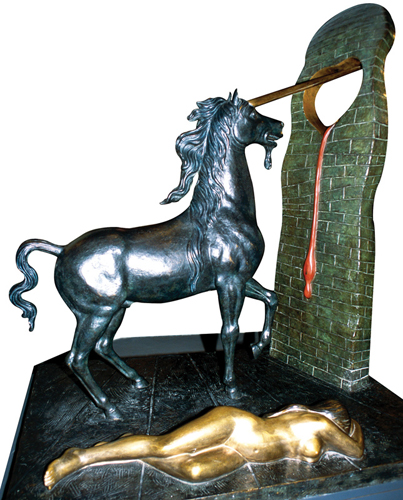
Dalì sculpture
Vincent Van Gogh
The
Dutch genius (1853–90) lived for a time on the third floor of 54 rue
Lepic. Many of his early paintings were inspired by the Moulin de la Galette windmill.
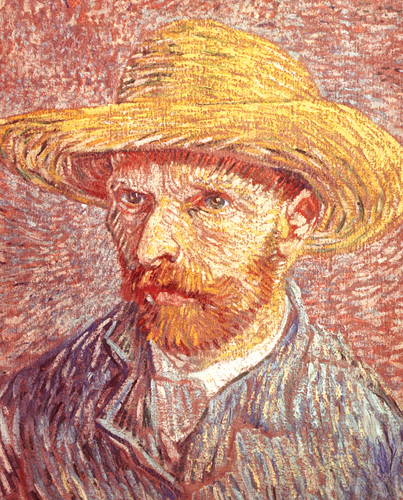
Pierre-Auguste Renoir
Renoir
(1841–1919) is another artist who found inspiration in the Moulin de la
Galette, when he lived at 12 rue Cortot. For a time he laid tables at Au Lapin Agile.
Edouard Manet
Manet
(1832–83) frequented Montmartre’s artist haunts and scandalized the art
world with his paintings of nudes, including the famous
Olympia
.
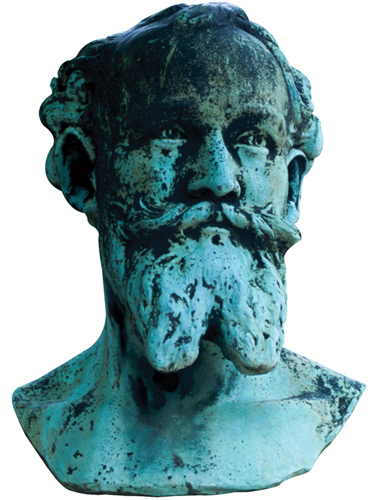
Maurice Utrillo
Utrillo
(1883–1955) often painted the Auberge de la Bonne-Franquette, an
atmospheric depiction of old Montmartre. His mother was the artist
Suzanne Valadon and they both lived at 12 rue Cortot, now the Musée de Montmartre.
Henri de Toulouse-Lautrec
More
than any other artist, Toulouse-Lautrec (1864–1901) is associated with
Montmartre for his sketches and posters of dancers at the Moulin Rouge
and other dance halls. They epitomize the era to this day .

Toulouse-Lautrec
Raoul Dufy
The
painter Dufy (1877– 1953) lived at Villa Guelma on the boulevard de
Clichy from 1911 to 1953, when he was at the height of his career.
Amedeo Modigliani
The
Italian painter (1884–1920) and sculptor arrived in Paris in 1906, when
he was 22, and was greatly influenced by Toulouse-Lautrec and the other
artists on the Montmartre scene.
Edgar Degas
Edgar
Degas was born in Paris in 1834 and lived in the city for the whole of
his life, most of the time in Montmartre. He died here in 1917 and is
buried in the Montmartre cemetery.
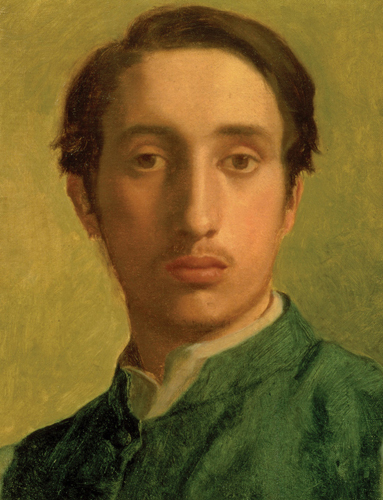
Places to Escape the Crowds
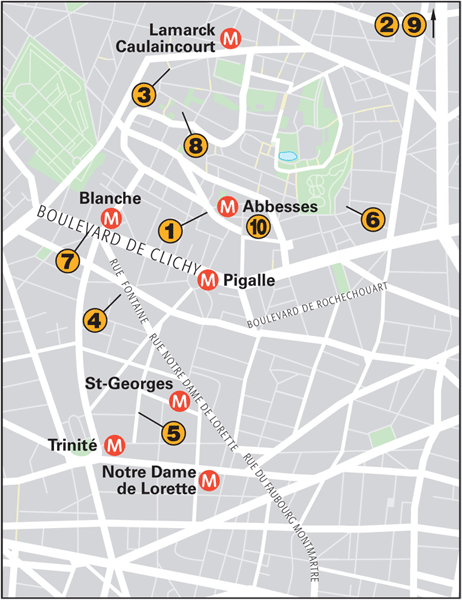
St-Jean l’Evangéliste de Montmartre
This 1904 church is a clash of styles, from Moorish to Art Nouveau.
Montmartre City Hall
On display in this fine building are two Utrillo paintings.
Hameau des Artistes
This little hamlet of artists’ studios is private, but no one will mind if you take a quiet look round.
Musée de la Vie Romantique
Writer George Sand frequently visited the owner of this house, artist Ary Scheffer. The building is now devoted to her works.
16 rue Chaptal, 75009
Open 10am–6pm Tue–Sun
Admission charge
Musée Gustave Moreau
The former home of Symbolist artist Moreau now displays a large collection of his works.
14 rue de La Rochefoucauld, 75009
Open 10am–12:45pm, 2–5:15pm Wed–Mon
Admission charge
www.musee-moreau.fr
Halle Saint Pierre
A fascinating cultural centre that exhibits naive, folk and “raw” art (Art Brut).
2 rue Ronsard, 75018
01 42 58 72 89
Open 10am–6pm daily
Admission charge
Cité Véron
This cul-de-sac is home to the Académie des Arts Chorégraphiques, a prestigious dance school.
Square Suzanne-Buisson
Named after a World War II Resistance fighter, this square is a romantic spot.
Rue de Poteau Market
This great food market is a long way from the tourist crowds.

Rue de Poteau market
Chapelle des Martyrs
Also
known as the Martyrium, this 19th-century chapel is said to be on the
spot where St Denis was beheaded by the Romans in AD 250.